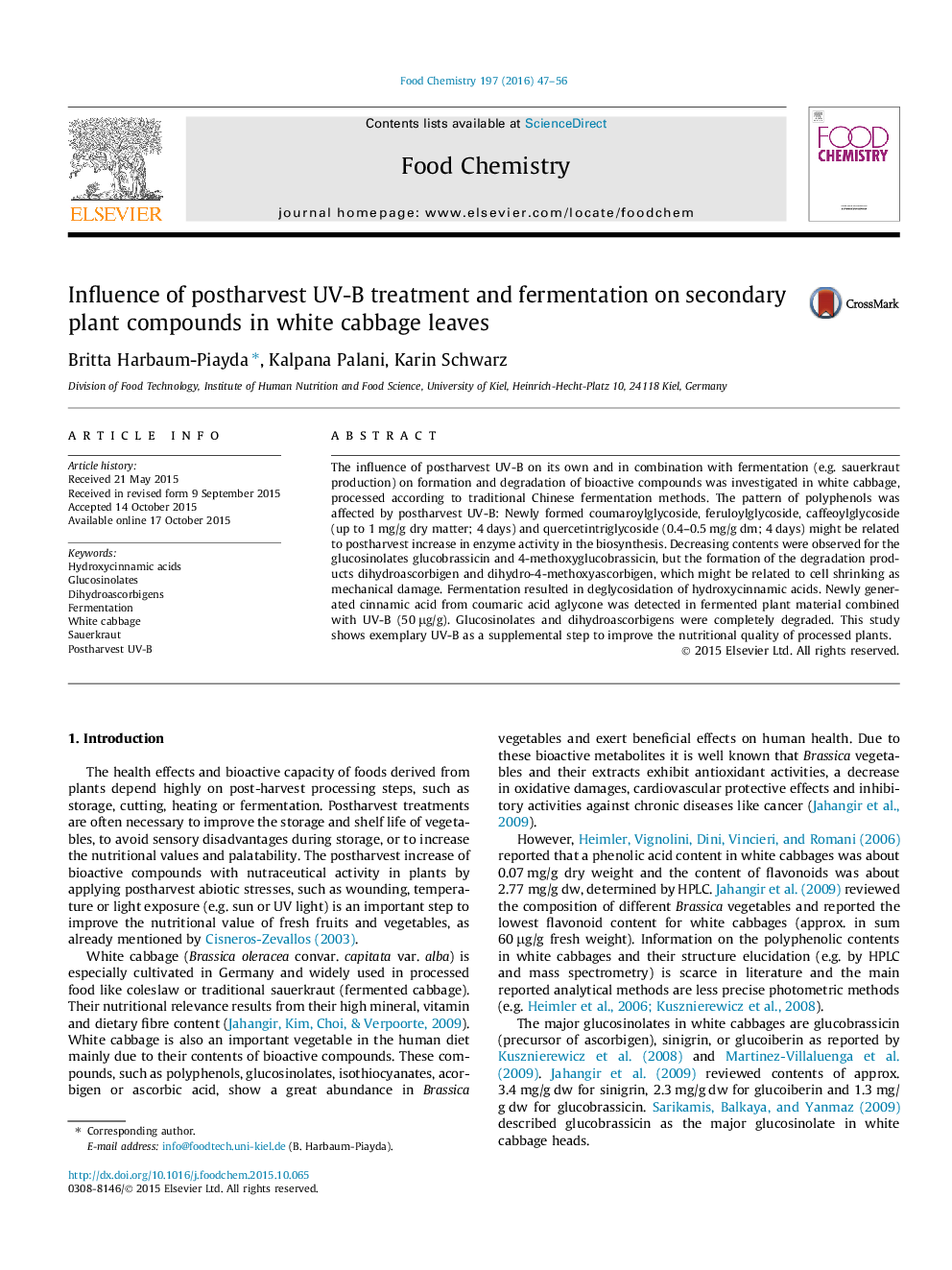| کد مقاله | کد نشریه | سال انتشار | مقاله انگلیسی | نسخه تمام متن |
|---|---|---|---|---|
| 1183441 | 963248 | 2016 | 10 صفحه PDF | دانلود رایگان |

• Postharvest UV-B offers the impact on nutrient quality during cabbage fermentation.
• Polyphenols were de novo formed in cabbage leaves by postharvest UV-B-radiation.
• Dehydroascorbigens were formed from glucobrassicins by postharvest UV-radiation.
• Polyphenol glycosides were degraded to their aglycones by cabbage fermentation.
• Cinnamic acid were built from coumaroylglycoside and coumaric acid by fermentation.
The influence of postharvest UV-B on its own and in combination with fermentation (e.g. sauerkraut production) on formation and degradation of bioactive compounds was investigated in white cabbage, processed according to traditional Chinese fermentation methods. The pattern of polyphenols was affected by postharvest UV-B: Newly formed coumaroylglycoside, feruloylglycoside, caffeoylglycoside (up to 1 mg/g dry matter; 4 days) and quercetintriglycoside (0.4–0.5 mg/g dm; 4 days) might be related to postharvest increase in enzyme activity in the biosynthesis. Decreasing contents were observed for the glucosinolates glucobrassicin and 4-methoxyglucobrassicin, but the formation of the degradation products dihydroascorbigen and dihydro-4-methoxyascorbigen, which might be related to cell shrinking as mechanical damage. Fermentation resulted in deglycosidation of hydroxycinnamic acids. Newly generated cinnamic acid from coumaric acid aglycone was detected in fermented plant material combined with UV-B (50 μg/g). Glucosinolates and dihydroascorbigens were completely degraded. This study shows exemplary UV-B as a supplemental step to improve the nutritional quality of processed plants.
Journal: Food Chemistry - Volume 197, Part A, 15 April 2016, Pages 47–56